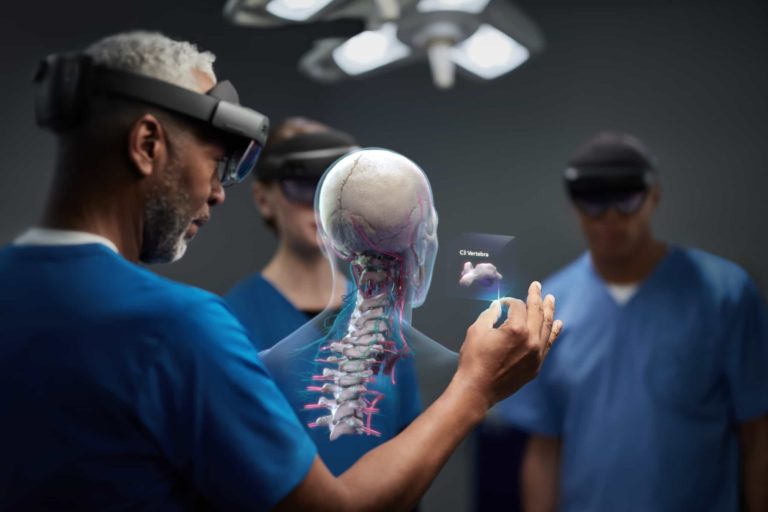
Though we spend ample time examining consumer-based XR applications and strategies, greater near-term impact is seen today in the enterprise. As is the case with many emerging technologies, enterprise XR spending has erstwhile outweighed its consumer equivalent.
So how big is this opportunity and what are best practices for enterprises to implement XR and realize strong ROI? This is the topic of ARtillery Intelligence’s recent report on enterprise XR case studies. It’s also the focus of the latest ARtillery Briefs episode (video and takeaways below).
Mental Mapping
First, to define Enterprise XR, it takes many forms including data visualization in corporate settings, and line-of-sight instructions to support assembly and maintenance in industrial settings. It also shines in field maintenance or remote support for dispatched IT services.
Starting with AR, its line-of-sight orientation can guide front-line workers. Compared to the “mental mapping” they do with 2D instructions, AR lets them achieve operational efficiencies which — when implemented at scale — can add up to worthwhile bottom-line impact.
And with VR, employee training and onboarding can be elevated through immersive sequences that boost experiential learning and memory recall. It also scales given that far-flung employees can get the same quality training, versus costly travel for senior training staff.
Beyond those micro-economic benefits, macro-benefits include lessening job strain and streamlining knowledge transfer, which in turn preserves institutional knowledge. That happens by both delaying retirement for skilled workers and upskilling novice workers faster.
Pilot Purgatory
But it’s not all good news. Practical barriers stand in the way, including organizational inertia, politics, and fear of new technology among stakeholders like front-line workers. One outcome of the above challenges is the dreaded “pilot purgatory,” where XR gets stuck in trial phases.
So what are effective tactics to avoid such fates? The answer traces back to our “3Ps” construct: people, product, and process. These are the areas where XR falls down, so it’s also where implementation strategies should focus, usually involving change management.
Starting with people, enterprise XR’s value proposition should be customized to individual stakeholders. What often happens is that the same ROI metrics that appeal to the C-suite are used to win over front-line workers. Instead, stress personal benefits like reduction in job strain.
One example from this batch of case studies is Fujitsu. It was able to appeal to enterprise AR end users — in this case, electronics assembly technicians — by demonstrating that the technology can make their jobs easier with less mental strain, which resonated and boosted adoption.
Product/Market Fit
Moving on to product strategies, XR should be applied where it has the best product/market fit. For example, AR is effective in guiding complex, non-repetitive tasks like equipment assembly, not simple repetitive tasks like changing the oil in your car. And again, VR shines in training.
XR’s value is also felt greatest where there are high stakes. For example, United Rentals used VR to train new employees on safety protocols, which made the process faster and more accurate. Given heavy equipment environments, this means not only saving dollars but also lives.
Finally, the last P is process, which is all about deployment and communications. Internal programs should follow a marketing playbook. Make the technology sexy, stress its advantages, and use thoughtful language consistently….sort of like an ad campaign.
For example, Coca-Cola was able to achieve meaningful traction using AR to streamline its warehousing operations through line-of-sight instructions for the critical process of pallet picking. It was embraced because its benefits were well-communicated and validated.
Common Thread
All of the above just scratches the surface and you can see more case studies in the full report. In total, there are 10 case studies that span vertical industries and use cases. Each breaks down campaign goals, implementation, results, and tactical takeaways.
A common thread in these case studies is counteracting organizational pitfalls. And that’s all about setting XR up with the best chance to succeed. After all the investment to bring XR into an organization, tangible returns can be better realized if it’s then deployed effectively.
In total, these best practices will represent an accelerant to enterprise XR’s long road to ubiquity. They’ll be required for the technology to hit its stride and reach its eventual tipping point.
For more color, see the full video below.

